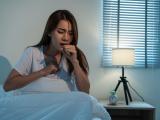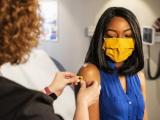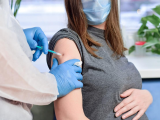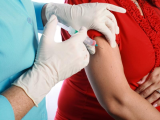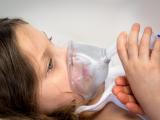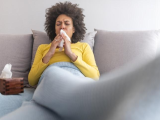Dec 21, 2009 (CIDRAP News) – A study in Australia showed that one dose of H1N1 influenza vaccine, rather than the two doses recommended in the United States, was enough to generate a probably protective immune response in children younger than 9 years.
But two vaccine experts who wrote an editorial accompanying the report said it is premature to assume that one dose would be enough to protect all young children, particularly since the study didn't include children with chronic health conditions or compromised immunity. The report and editorial were published online today by the Journal of the American Medical Association.
The Australian researchers, led by Terry Nolan, MBBS, PhD, of the University of Melbourne, write that their findings "suggest that a single 15-microgram [mcg] dose vaccine regimen may be effective and well-tolerated in children" and may have positive implications for H1N1 prevention in the wider population.
On the basis of preliminary trial results in September, US health officials recommended a single dose of H1N1 for adults and older children but called for two doses at least 21 days apart for children from the ages of 6 months through age 9 years. Children (and young people through age 24) are among the five priority groups for vaccination.
The Australian team recruited 370 healthy infants and children, ages 6 months through 8 years, who were given two 15-mcg or 30-mcg doses of vaccine 21 days apart. The vaccine was made by CSL Biotherapies, an Australian company that supplies H1N1 vaccine to both Australia and the United States.
The main criterion for a protective immune response was a hemagglutination antibody titer of 1:40 or greater. After the first dose, this criterion was met by 161 of 174 children in the 15-mcg group (92.5 %; 95% confidence interval [CI], 87.6% to 95.6%) and 168 of 172 children in the 30-mcg group (97.7%; 95% CI, 94.2% to 99.1%). All participants had a titer of 1:40 or greater after the second vaccine dose.
A few cases of severe postimmunization fever were reported, primarily among the youngest children and those who received the higher dose. Forty-five percent of the children reported mild problems at the injection site, 10% reported moderate local reactions, and 2.4% reported severe local reactions.
The team found that an unexpectedly high percentage of the children had antibody titers greater than 1:40 before vaccination: about 9% to 14% for those under 3 years and 28% to 33% for those 3 to 8 years old. This may reflect previous subclinical infections with the H1N1 virus, since more than two thirds of the children lived in areas where H1N1 infection reports had already started to decline, the report says.
The authors say the strength of the immune response may be related to specific and as yet unknown antigen characteristics of the H1N1 virus. They note that their study does not address the immunogenicity of a lower dose of vaccine or whether immune responses are weaker in children who have chronic disease or immunocompromising conditions or treatments.
In the accompanying editorial, infectious disease experts Anthony E. Fiore, MD, MPH, and Kathleen Neuzil, MD, MPH, comment that although the findings are encouraging, "it is premature to assume that only one dose will be needed to provide adequate protection for all young children based on these data." Fiore works at the Centers for Disease Control and Prevention in Atlanta, and Neuzil is at PATH in Seattle.
Most studies of flu vaccination in previously unvaccinated young children failed to show significant protection after one dose, they write. And in particular, the preliminary findings in US National Institutes of Health studies (using a different H1N1 vaccine) showed that only 25% of children 6 to 35 months old and 55% of 3- to 9-year-olds had antibody titers of 1:40 or greater when measured 3 weeks after one 15-mcg dose.
Fiore and Neuzil also note that children in the study received at least 15 mcg of vaccine in their first dose, which is twice the initial dose of 7.5 mcg that children 6 to 35 months old receive in the United States. And in the older children, antibody levels were about 30% lower than those seen in adults who received the same dose in another study.
What's most important, the editorial states, is that the "lower immunogenicity is expected in children with chronic medical conditions who are at substantially higher risk of severe influenza complications."
Though the findings suggest that one 15-mcg dose of the vaccine used in the study is enough to protect at least some children, "the findings cannot be generalized with confidence to all children, epidemiological circumstances in every country, or different vaccine formulations," Fiore and Neuzil write.
Nolan T, McVernon J, Skeljo M, et al. Immunogenicity of a monovalent 2009 influenza A(H1N1) vaccine in infants and children: a randomized trial. JAMA 2009; published online Dec 21 [Abstract]
Fiore AE, Neuzil KM. 2009 A(H1N1) monovalent vaccines for children (Editorial). JAMA 2009; published online Dec 21
See also:
Sep 21 CIDRAP News story "Trial predicts 2 H1N1 shots for young kids, 1 for older"


